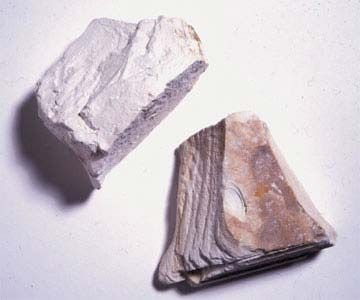76. Where are the major gypsum deposits found in Assam?
A) Karbi Hills
B) Cachar district
C) Dibrugarh district
D) Garo Hills
View Answer
77. Which mineral resource is used to manufacture crockeries and sanitary wares?
A) Gypsum
B) Kaolin
C) Mica
D) Dolomite
View Answer

78. Which organization was constituted in 1899 to explore oil in Assam?
A) Assam Oil Company
B) Oil India Limited
C) Oil and Natural Gas Commission
D) Oil and Natural Gas Corporation
View Answer

79. Which river in Assam is associated with the drilling of the first oil well?
A) Brahmaputra River
B) Barak River
C) Namdang River
D) Dibang River
View Answer
80. What percentage of India’s total area does Assam represent?
A) 2.39%
B) 2.59%
C) 24.30%
D) 28.0%
View Answer
81. Which region lies between the two river valleys in Assam?
A) North Cachar Hills
B) Karbi Anglong Plateau
C) Patkai Range
D) Bhutan Himalayas
View Answer
82: What lies at the southern foot of the Arunachal Himalaya and Bhutan Himalayas in Assam?
A) Brahmaputra Plain
B) Patkai Range
C) North Cachar Hills
D) Karbi Anglong Plateau
View Answer
83. Which countries share borders with Assam?
A) Bhutan and Bangladesh
B) Nepal and Myanmar
C) Sri Lanka and Pakistan
D) China and Thailand
View Answer
84. Assam is a transitional zone between which two regions?
A) South Asia and Southeast Asia
B) Europe and Africa
C) North America and South America
D) Australia and Oceania
View Answer
85. What is the population of Assam in relation to the total national population of India?
A) 2.39%
B) 2.59%
C) 24.30%
D) 28.0%
View Answer
86. Why has Assam become strategically important?
A) Due to its flora and fauna
B) Because of its cultural heritage
C) Because of its location
D) Due to its natural resources
View Answer
87. Which major river flows through the north of Assam?
A) Brahmaputra
B) Barak
C) Ganges
D) Yamuna
View Answer
88. What geographical feature surrounds Assam on three sides?
A) Hills
B) Mountains
C) Rivers
D) Plains
View Answer
89. Which two states border Assam?
A) Tripura and Meghalaya
B) Manipur and Mizoram
C) Arunachal Pradesh and Nagaland
D) West Bengal and Bangladesh
View Answer
90. Assam is located between which latitude?
A) 230 N and 300 N
B) 24.30 N and 280 N
C) 240 N and 380 N
D) 24.60 N and 28.50 N
View Answer
91. Which foreign country shares a border with Assam?
A) Bhutan
B) Myanmar
C) Nepal
D) Sri Lanka
View Answer
92. Area wise Assam stands in which number among the Northeastern States?
A) First
B) Second
C) Third
D) Fourth
View Answer
93. How many districts are there in Assam as of now?
A) 24
B) 34
C) 44
D) 54
View Answer
94. Physiography of Assam can be divided into how many parts?
A) One
B) Four
C) Three
D) Two
View Answer
95. Hamren Plateau is a continuous part of_____________
A) Jaintia Hills
B) Khasi Hills
C) Garo Hills
D) Naga Hills
View Answer
96. Which is the highest peak of the Barail Range?
A) Betlingchip
B) Theipibung
C) Mahadeo
D) Hamplopet
View Answer
(The Barail Range is a tertiary mountain range in Northeast India with an area of approximately 80,000 ha between Brahmaputra and Barak basins stretching from Nagaland & Manipur to the east and Assam & Meghalaya to the west).
97. The incoming southwest monsoon winds in Assam are obstructed by the _______________.
A) Himalayan range
B) Meghalaya Plateau
C) Barak Valley
D) Brahmaputra Valley
View Answer
98. The climate of the Brahmaputra and the Barak Valleys in Assam is characterized by _______________.
A) Extreme cold winds
B) High temperatures
C) Orographic lows
D) Dry conditions
View Answer
(Rain, snow, or other precipitation created when moist air is raised as it passes over a mountain range is known as orographic precipitation. The precipitation originates from orographic clouds, which form as the air rises and cools. The majority of the precipitation falls upwind of the mountain range).
99. The Himalayan range protects the Brahmaputra Valley from the extremely cold winds of the _______________ region.
A) Tibetan
B) Indian
C) Nepalese
D) Bhutanese
View Answer
100. The lower Brahmaputra Valley receives rainfall derived from the clouds that come across the ______.
A) Brahmaputra River
B) Barak Valley
C) Meghalaya Plateau
D) Himalayan foothills
View Answer

